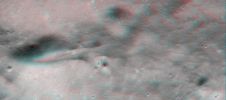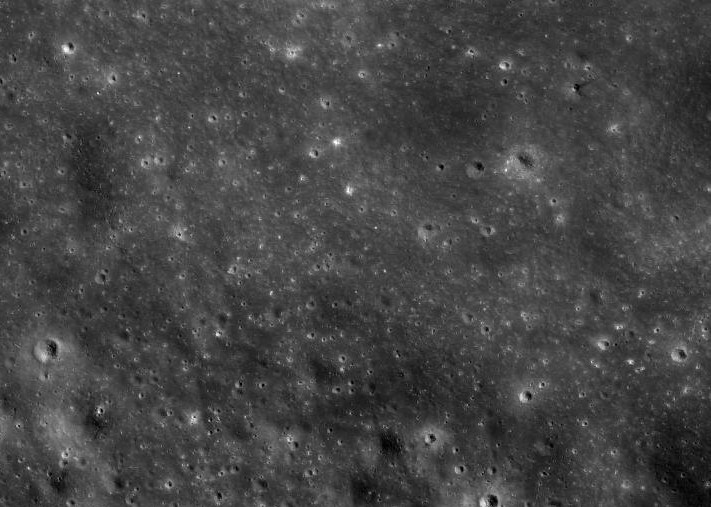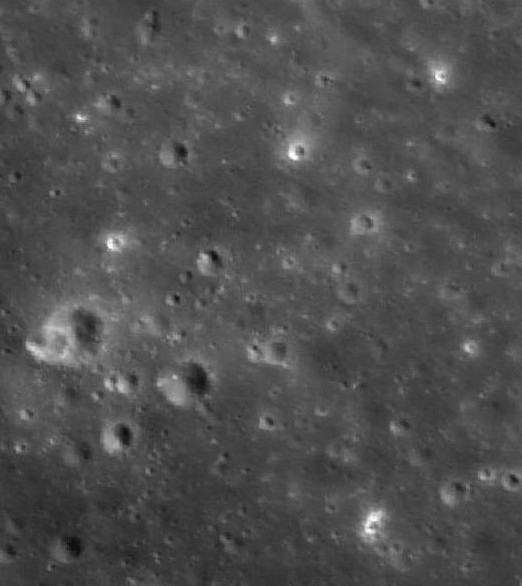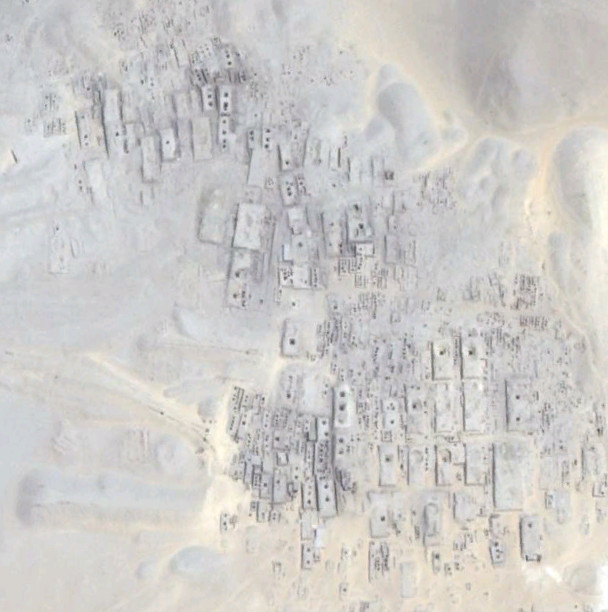It looks like you're using an Ad Blocker.
Please white-list or disable AboveTopSecret.com in your ad-blocking tool.
Thank you.
Some features of ATS will be disabled while you continue to use an ad-blocker.
share:
reply to post by wmd_2008
Here are the images you requested.
The first image is a context view showing the selected area.
The second image is a crop from the panoramic view. (AS15-P-9625)
The third image is the enhanced version of the same view.



Here are the images you requested.
The first image is a context view showing the selected area.
The second image is a crop from the panoramic view. (AS15-P-9625)
The third image is the enhanced version of the same view.



reply to post by arianna
Thanks for that arianna will have a close look and get back to you as soon as I can with some images of my own
Thanks for that arianna will have a close look and get back to you as soon as I can with some images of my own
For members who would like to view a full-size version of the image seen above click on the links below.
The first image shows a rectangle around the selected area and the second image is an unmarked version.
Both images are 1000 pixels wide.


Direct links:
i985.photobucket.com...
i985.photobucket.com...
The first image shows a rectangle around the selected area and the second image is an unmarked version.
Both images are 1000 pixels wide.


Direct links:
i985.photobucket.com...
i985.photobucket.com...
edit on 10-5-2013 by arianna because: Direct links
added
If anyone is interested here is a pseudo-3D view of the above image. Note how the structures stand out.
Click the Direct link below but you will need red/blue glasses to view the image.
Direct link:
i985.photobucket.com...
Click the Direct link below but you will need red/blue glasses to view the image.
Direct link:
i985.photobucket.com...
Originally posted by arianna
If anyone is interested here is a pseudo-3D view of the above image. Note how the structures stand out.
Maybe because they are pseudo-structures.
PS: a pseudo-3d image is as useful as the original, as it's made from the same data. A true 3d image would help.
Originally posted by ArMaP
Originally posted by arianna
If anyone is interested here is a pseudo-3D view of the above image. Note how the structures stand out.
Maybe because they are pseudo-structures.
PS: a pseudo-3d image is as useful as the original, as it's made from the same data. A true 3d image would help.
You're quite correct ArMaP.
If only a stereo pair of images for this particular location could be found.
Honestly, I have to agree that there are elements of the image that look as though they are potentially artificial.
However, without ever having been to the moon myself, and having only the NASA images to go by, in the original NASA images there appears to be nothing artificial. I think that the OP is merely a result of pareidolia, and so, unfortunately, is nothing more than an assortment of geological magic.
However, without ever having been to the moon myself, and having only the NASA images to go by, in the original NASA images there appears to be nothing artificial. I think that the OP is merely a result of pareidolia, and so, unfortunately, is nothing more than an assortment of geological magic.
reply to post by windslayer
That's the best I read, "an assortment of geological magic" - only what can be seen is not geological at all.
Here is a zoomed-in view in which I have arrowed some of the structures but there are many more to observe.
The first image shows the structural features arrowed and the second is an unmarked view for comparison.


That's the best I read, "an assortment of geological magic" - only what can be seen is not geological at all.
Here is a zoomed-in view in which I have arrowed some of the structures but there are many more to observe.
The first image shows the structural features arrowed and the second is an unmarked view for comparison.


Originally posted by arianna
If only a stereo pair of images for this particular location could be found.
You should investigate more about the photos you use, the Apollo panoramic photos were stereo pairs, the pair for photo AS15-P-9625 is photo AS15-P-9630.
Here's a real 3D image, made from those two photos.
(click for full size)

Originally posted by ArMaP
Originally posted by arianna
If only a stereo pair of images for this particular location could be found.
You should investigate more about the photos you use, the Apollo panoramic photos were stereo pairs, the pair for photo AS15-P-9625 is photo AS15-P-9630.
Here's a real 3D image, made from those two photos.
(click for full size)

Ah ArMaP, but could the two images be considered a stereo pair?
I had already looked at the 9630 image with a view to making an anaglyph but I was put off of doing so because 9625 is given as being the forward (FWD) view and 9630 is given as being the rear (AFT) view but no mention of the two images being a true stereo pair.
I will have to do some work on the same cropped section from 9630 as in 9625 and then make an enhancement. The two enhanced versions may then be suitable to produce an anaglyph. It's worth a try just to see the result.
Originally posted by arianna
reply to post by windslayer
That's the best I read, "an assortment of geological magic" - only what can be seen is not geological at all.
Here is a zoomed-in view in which I have arrowed some of the structures but there are many more to observe.
The first image shows the structural features arrowed and the second is an unmarked view for comparison.
I've looked at the images, and at the images posted by everyone else in this thread, and, I still think that they aren't structures at all. I'd love to believe that they are, but I just can't trick my mind into seeing something that isn't there. I still believe that what you're seeing is the result of pareidolia, in which case, you're always going to see the structures, and those of us who can't see them, are still not going to see them.
pareidolia
There are enough weird things in the universe already, things that look or seem artificial that, when examined in greater detail, end up being the result of thousands or even millions of years of evolution or geologic formation.
I think this is just another one of those things.
Originally posted by windslayer
I've looked at the images, and at the images posted by everyone else in this thread, and, I still think that they aren't structures at all. I'd love to believe that they are, but I just can't trick my mind into seeing something that isn't there. I still believe that what you're seeing is the result of pareidolia, in which case, you're always going to see the structures, and those of us who can't see them, are still not going to see them.
...........or possibly, do not want to see them.
I was searching the Apollo image catologue this afternoon and on a hunch decided to pick another image to enhance just to see if there was anything to find. Have a look at the following image and see if you notice any type of conformity in the image. There are many small light-coloured dots showing in the view but what could these small dots possibly be?
A large view is available at the Direct link below.

Direct link:
i985.photobucket.com...
reply to post by arianna
They are called impact craters.
And once again, you fail to link to the original (not touched by you) photo.
You have a very bad habit of doing that.
They are called impact craters.
And once again, you fail to link to the original (not touched by you) photo.
You have a very bad habit of doing that.
reply to post by eriktheawful
No erik, if you look closely what you are seeing are not impact craters. They are something else and part of my research is to try and determine exactly what these features are. The bright coloured dots showing in the image are also interesting. It would appear that the sun is reflecting from these features and they seem to be mounted at some height above the surface (see image). The location of the view is not far from the spacecraft shape as seen in image AS15-P-9625.
As for showing the untouched original, I will do this in due course with the reference data so members can view the location for themselves. The image shown above is an enhanced version which was darkened deliberately. Firstly, to get an idea of the shapes on the terrain and secondly, to determine where the brighter areas of the image are which cannot be realized from viewing the original image download.
Should any members be interested, the program used for the image enhancement was Photoshop v7.0 but all other processing was carried out using Paintshop Pro v6.0. Unfortunately, using the GIMP program v2.6.12 for enhancing images is not subtle enough to 'bring out' the detail of what is on the surface.
No erik, if you look closely what you are seeing are not impact craters. They are something else and part of my research is to try and determine exactly what these features are. The bright coloured dots showing in the image are also interesting. It would appear that the sun is reflecting from these features and they seem to be mounted at some height above the surface (see image). The location of the view is not far from the spacecraft shape as seen in image AS15-P-9625.
As for showing the untouched original, I will do this in due course with the reference data so members can view the location for themselves. The image shown above is an enhanced version which was darkened deliberately. Firstly, to get an idea of the shapes on the terrain and secondly, to determine where the brighter areas of the image are which cannot be realized from viewing the original image download.
Should any members be interested, the program used for the image enhancement was Photoshop v7.0 but all other processing was carried out using Paintshop Pro v6.0. Unfortunately, using the GIMP program v2.6.12 for enhancing images is not subtle enough to 'bring out' the detail of what is on the surface.
Here is the reference information for the above image with a context view showing the selected area.
Image Name: AS15-P-9627
Mission: Apollo 15
Revolution (Orbit): 38
Camera: Panoramic
Exposure: N/A
Camera Tilt: Forward
Scan Pixel Scale: N/A
Start Time: (DOY:213) 1971-08-01T20:52:21
Spacecraft Altitude: 116.52 km
Center Coordinates (lat, lon): -18.99°,116.98°
Corner Coordinates:
-24.18°,116.59°
-21.71°,117.44°
-17.1°,118.99°
-14.67°,119.8°
-14.64°,120.59°
-17.2°,119.71°
-22.02°,118.11°
-24.65°,117.26°
Sun Elevation: 27.0°
Features: DELPORTE, SOUTHWEST OF,IZSAK, NORTH OF
Film Type: 3414
Color: black&white
Image ref: wms.lroc.asu.edu...
View showing selected area for investigation.

Image Name: AS15-P-9627
Mission: Apollo 15
Revolution (Orbit): 38
Camera: Panoramic
Exposure: N/A
Camera Tilt: Forward
Scan Pixel Scale: N/A
Start Time: (DOY:213) 1971-08-01T20:52:21
Spacecraft Altitude: 116.52 km
Center Coordinates (lat, lon): -18.99°,116.98°
Corner Coordinates:
-24.18°,116.59°
-21.71°,117.44°
-17.1°,118.99°
-14.67°,119.8°
-14.64°,120.59°
-17.2°,119.71°
-22.02°,118.11°
-24.65°,117.26°
Sun Elevation: 27.0°
Features: DELPORTE, SOUTHWEST OF,IZSAK, NORTH OF
Film Type: 3414
Color: black&white
Image ref: wms.lroc.asu.edu...
View showing selected area for investigation.

Originally posted by arianna
reply to post by eriktheawful
No erik, if you look closely what you are seeing are not impact craters. They are something else and part of my research is to try and determine exactly what these features are. The bright coloured dots showing in the image are also interesting. It would appear that the sun is reflecting from these features and they seem to be mounted at some height above the surface (see image). The location of the view is not far from the spacecraft shape as seen in image AS15-P-9625.
As for showing the untouched original, I will do this in due course with the reference data so members can view the location for themselves. The image shown above is an enhanced version which was darkened deliberately. Firstly, to get an idea of the shapes on the terrain and secondly, to determine where the brighter areas of the image are which cannot be realized from viewing the original image download.
Should any members be interested, the program used for the image enhancement was Photoshop v7.0 but all other processing was carried out using Paintshop Pro v6.0. Unfortunately, using the GIMP program v2.6.12 for enhancing images is not subtle enough to 'bring out' the detail of what is on the surface.
Yes, what I am seeing is impact craters.
I've been studying celestial objects, including the moon for over 30 years now with telescopes, my own camera images I've taken and various other resources, and my eyes tell me that they are impact craters:
Image from the LROC in the area of your photo. Only manipulation is cropping:

Zoom in of area at 0.5 meters per pixel:

Impact craters. They appear white because they are much younger than other impact craters and are exposing material that has not been exposed to various cosmic and solar radiation.
You can continue to tell yourself otherwise if you so desire with your only proof being photos that you have badly damaged through over manipulation in a photoshop program (which in doing so you introduce data that is false and not true), and using a magnifying glass looking at an image on a computer screen, and declaring a hand full of pixels are a artificial structure, but no one is going to take you seriously due to what your methods are.
When you come back with something like this, in which the ONLY photo manipulation that you've done is cropping and orientation, then yes, you'll get people's attention then:

reply to post by arianna
Back to simple tests, you claim that the white dots on your image are not craters pick one from below and lets find it on the original picture before your process.
i985.photobucket.com...
Pick a dot
Back to simple tests, you claim that the white dots on your image are not craters pick one from below and lets find it on the original picture before your process.
i985.photobucket.com...
Pick a dot
Originally posted by wmd_2008
reply to post by arianna
Back to simple tests, you claim that the white dots on your image are not craters pick one from below and lets find it on the original picture before your process.
i985.photobucket.com...
Pick a dot
The task you have set is not an easy one due to the 'whitewash' that has been added to the image before its release but a visual presentation can be produced of where some of the 'dots' are located in the original image.
reply to post by eriktheawful
So erik, you consider yourself to be an expert on lunar matters. Well, that makes two of us.
What's wrong with using a process in Photoshop to find answers to things that should be of great concern to people. Were the Apollo 11 astronauts 'warned' to get off the moon? If so, by whom and how was the warning given? Did a couple of lunarians walk up to the astronauts and tell them verbally to get lost or was the presence of their huge spacecraft enough for the message to come back to earth that a moonbase is out of the question.
It's questions like these that prompts my desire to find out exactly what is on the lunar surface and to find out if we are being given the correct visual information by the space-science communities which, to be quite honest, after years of visual examination and analysis of many of the images from Mars and the moon I do not think we are.
And BTW, I still have the original enhancement to post as the image shown above is the darkened version. Another thing you may not have realized is that you will not be able to see the structural features on the surface using an optical telescope. There would be too much distortion due to our atmosphere. Now, if you could hitch a lift in the ISS that might help to get a clearer picture of the lunar surface.
So erik, you consider yourself to be an expert on lunar matters. Well, that makes two of us.
What's wrong with using a process in Photoshop to find answers to things that should be of great concern to people. Were the Apollo 11 astronauts 'warned' to get off the moon? If so, by whom and how was the warning given? Did a couple of lunarians walk up to the astronauts and tell them verbally to get lost or was the presence of their huge spacecraft enough for the message to come back to earth that a moonbase is out of the question.
It's questions like these that prompts my desire to find out exactly what is on the lunar surface and to find out if we are being given the correct visual information by the space-science communities which, to be quite honest, after years of visual examination and analysis of many of the images from Mars and the moon I do not think we are.
And BTW, I still have the original enhancement to post as the image shown above is the darkened version. Another thing you may not have realized is that you will not be able to see the structural features on the surface using an optical telescope. There would be too much distortion due to our atmosphere. Now, if you could hitch a lift in the ISS that might help to get a clearer picture of the lunar surface.
edit on 13-5-2013 by arianna because: added text
new topics
-
A Warning to America: 25 Ways the US is Being Destroyed
New World Order: 3 hours ago -
President BIDEN's FBI Raided Donald Trump's Florida Home for OBAMA-NORTH KOREA Documents.
Political Conspiracies: 9 hours ago -
Maestro Benedetto
Literature: 10 hours ago -
Is AI Better Than the Hollywood Elite?
Movies: 10 hours ago
top topics
-
President BIDEN's FBI Raided Donald Trump's Florida Home for OBAMA-NORTH KOREA Documents.
Political Conspiracies: 9 hours ago, 28 flags -
Gaza Terrorists Attack US Humanitarian Pier During Construction
Middle East Issues: 15 hours ago, 8 flags -
Massachusetts Drag Queen Leads Young Kids in Free Palestine Chant
Social Issues and Civil Unrest: 17 hours ago, 7 flags -
Las Vegas UFO Spotting Teen Traumatized by Demon Creature in Backyard
Aliens and UFOs: 14 hours ago, 6 flags -
A Warning to America: 25 Ways the US is Being Destroyed
New World Order: 3 hours ago, 6 flags -
Meadows, Giuliani Among 11 Indicted in Arizona in Latest 2020 Election Subversion Case
Mainstream News: 17 hours ago, 5 flags -
2024 Pigeon Forge Rod Run - On the Strip (Video made for you)
Automotive Discussion: 15 hours ago, 4 flags -
Is AI Better Than the Hollywood Elite?
Movies: 10 hours ago, 3 flags -
The functionality of boldening and italics is clunky and no post char limit warning?
ATS Freshman's Forum: 16 hours ago, 1 flags -
Maestro Benedetto
Literature: 10 hours ago, 1 flags
active topics
-
Alternate Electors vs Fake Electors - What is the Difference.
2024 Elections • 116 • : Threadbarer -
Gaza Terrorists Attack US Humanitarian Pier During Construction
Middle East Issues • 34 • : AllisVibration -
Victoria government has cancelled the commmonwealth games, no money.
Regional Politics • 3 • : nazaretalazareta -
A Warning to America: 25 Ways the US is Being Destroyed
New World Order • 2 • : Disgusted123 -
President BIDEN's FBI Raided Donald Trump's Florida Home for OBAMA-NORTH KOREA Documents.
Political Conspiracies • 19 • : ADVISOR -
When an Angel gets his or her wings
Religion, Faith, And Theology • 22 • : AcrobaticDreams1 -
King Charles 111 Diagnosed with Cancer
Mainstream News • 321 • : FlyersFan -
Is there a hole at the North Pole?
ATS Skunk Works • 41 • : burritocat -
Massachusetts Drag Queen Leads Young Kids in Free Palestine Chant
Social Issues and Civil Unrest • 16 • : FlyersFan -
Weinstein's conviction overturned
Mainstream News • 24 • : burritocat
